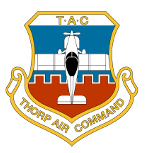|
ircraft: Thorp Amateur-Built
Where: Imperial, TX
Injuries: 2 fatal
Phase of flight: Cruise
At 1400 central daylight time, a Holt Thorpe T-18C amateur-built experimental airplane was destroyed when it impacted terrain following an in-flight separation of a propeller blade near Imperial, Texas. The private pilot, who was the registered owner of the airplane, and his passenger, sustained fatal injuries. Visual meteorological conditions prevailed and a flight plan was not filed for the personal flight. The local flight originated from the Roy Hurd Memorial Airport, Monahans, Texas, approximately 1345.
According to witnesses, the airplane was in cruise flight southwest bound, between 1,500 and 2,500 feet agl, when they heard a loud noise and observed pieces of the airplane separate from the airframe. Subsequently, the airplane entered a descent and impacted the ground. A fire erupted and consumed the airplane.
The FAA inspector, who examined the airplane, reported that the airplane was equipped with a Lycoming IO-360-B1E engine and a Hartzell HC-F2YR-1F, 2-bladed, constant speed propeller. Sections of the engine cowling were located approximately 1 mile northeast of the accident site. Further examination revealed that one of the two propeller blades had fractured and a portion was missing. The missing portion of the blade was not recovered. The propeller was disassembled and the fractured blade was sent to the NTSB Materials Laboratory in Washington, D.C for further examination.
The NTSB metallurgist reported that the blade fractured 14.5 inches from the butt end. The fracture surface appeared relatively flat and parallel to the chordwise plane with a smooth, curving boundary, typical of fatigue. The fatigue features emanated from an intergranular fracture area that was covered by a corrosion product. The metallurgist added that the blade length was not consistent with the original manufacturing specifications. On-scene measurements revealed that the total length of the blade was 32 inches, corresponding to a propeller diameter of 66 inches. When manufactured, the propeller diameter was 80 inches.
According to the propeller manufacturer, the recommended time between overhaul on the accident propeller is 2,000 hours or 5 years, whichever comes first. According to the airplane s maintenance logbooks, the propeller had accumulated a total of 369 hours at the time of its last overhaul. When the airplane underwent its most recent condition inspection, the propeller had accumulated a total of 743 hours. There was no record of the propeller undergoing an overhaul since 1991. Additionally, the HC-F2YR-1F propeller was not approved by the manufacturer for installation on the Lycoming IO-360-B1E engine.
The National Transportation Safety Board determines the probable cause(s) of this accident/incident as follows: The failure of the propeller blade due to fatigue, which originated from a corrosion crack. A contributory factor was the pilot/owner s failure to ensure that the propeller was overhauled at the manufacturer s recommended interval.
Source: National Transportation Board
|







